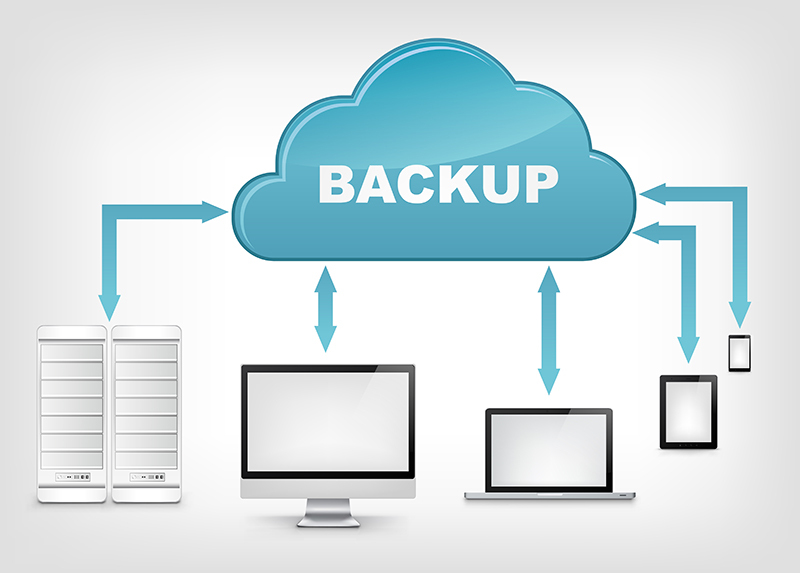What Happens to Redundancy If Company Goes Bust? A Guide to Your Rights
What Happens to Redundancy If Company Goes Bust? A Guide to Your Rights
Blog Article
Exploring the Operational Dynamics of Company Redundancy and Its Long-Term Sustainability

Redundancy Techniques for Business Continuity
In order to make sure undisturbed operations, services should implement effective redundancy strategies for company continuity. Redundancy in this context refers to the replication of vital parts or features within a system to alleviate the influence of potential failings. By incorporating redundancy methods, companies can improve their strength versus disturbances triggered by various elements such as natural catastrophes, devices failures, or cyber-attacks.
One typical redundancy method is the execution of back-up systems and information storage services. This involves creating duplicates of essential information and systems that can be triggered in case of a key system failure. In addition, organizations can develop repetitive communication channels and power sources to maintain connection and procedures throughout unforeseen events.
In addition, cross-training workers to do numerous functions within the company can serve as a useful redundancy approach. If crucial workers are unavailable due to disease or other factors, this makes certain that crucial tasks can still be brought out also. Generally, efficient redundancy techniques are crucial for organizations to promote operational continuity and lessen the effect of potential disruptions.
Influence of Redundancy on Organizational Durability
Given the critical duty redundancy methods play in guaranteeing company continuity, discovering the impact of redundancy on business strength comes to be essential for recognizing the alternative functional dynamics of a firm. Organizational resilience refers to an entity's ability to adapt to interruptions, recoup from problems, and change when essential while preserving core features. Redundancy, when strategically implemented, can significantly add to enhancing a company's strength in the face of unforeseen challenges. By having backup systems, employees, or processes in place, firms can much better withstand shocks and continue procedures with marginal interruption.
Furthermore, redundancy can boost staff member spirits and self-confidence, knowing that there are contingency plans in place to deal with unanticipated conditions. This sense of safety and security can result in enhanced efficiency and an extra favorable job setting. Additionally, redundancy can promote technology and creative thinking within a company as staff members really feel empowered to take calculated risks, knowing that there is a safeguard to support them in case of failing. On the whole, the influence of redundancy on business durability is profound, shaping the long-term sustainability and success of a company.
Stabilizing Efficiency and Adaptability in Redundancy
Accomplishing a harmonious equilibrium in between functional performance and flexible flexibility is an essential difficulty in the strategic release of redundancy within organizations. Too much adaptability without a strong operational structure can result in ineffectiveness and variance.
To stabilize efficiency and adaptability in redundancy planning, companies need to carefully analyze their functional demands, market dynamics, and strategic goals. Carrying out lean techniques can improve efficiency by getting rid of and simplifying processes waste, while promoting a culture of flexibility and continuous renovation can improve versatility. Furthermore, purchasing cross-training programs and durable communication networks can aid grow a versatile labor force efficient in handling varied tasks during durations of shift. Ultimately, discovering the appropriate balance in between efficiency and versatility is critical for building a durable and lasting organization when faced with unpredictability.
Long-Term Sustainability Through Redundancy Preparation
To ensure long-lasting viability and stability, companies have to purposefully straighten their redundancy preparation with long-term sustainability objectives, consequently balancing functional effectiveness with flexible versatility. Lasting sustainability with redundancy planning involves more than simply short-term cost-cutting procedures. It requires a comprehensive tactical approach that anticipates future difficulties and chances. Companies ought to see redundancy not as a responsive option to prompt troubles however as an aggressive strategy for long-lasting success. By incorporating redundancy preparation with sustainability goals, organizations can create a resistant structure that can stand up to different market changes and inner changes.

Positive Steps for Sustainable Business Procedures
Exactly how can companies proactively improve their operational sustainability for lasting success? Applying aggressive measures is important for firms intending to guarantee lasting procedures. One essential technique is to purchase modern technology and development to improve procedures, visite site lower waste, and remain competitive in the marketplace. Embracing sustainable practices such as minimizing energy intake, lessening carbon footprint, and optimizing source use can not only benefit the atmosphere however likewise lead to set you back savings over time.
Furthermore, promoting a society of continual improvement and understanding within the company can boost adaptability to changing market problems and consumer demands. Encouraging staff member participation in decision-making procedures and offering possibilities for specialist growth can enhance spirits, efficiency, and general efficiency. Developing clear objectives, monitoring vital efficiency indications, and on a regular basis assessing progress are essential elements of proactive sustainability monitoring.
Teaming up with vendors, clients, and various other stakeholders to advertise sustainable methods throughout the supply chain can produce a causal sequence of positive effect - redundancy pay if company goes bust. By taking positive actions towards functional sustainability, companies can develop durability, drive technology, and secure their long-term success in an ever-evolving organization landscape
Final Thought

In the realm of business management, the tactical release of firm redundancy stands as an essential yet detailed technique that requires a delicate balance between operational efficiency and lasting stability. By dissecting the operational characteristics that underpin company redundancy and reviewing its broader implications for business resilience and flexibility, a nuanced understanding of exactly how redundancy methods can form the future trajectory of a business starts to unravel.Given the vital function redundancy strategies play in making sure company continuity, checking out image source the impact of redundancy on business address resilience ends up being imperative for comprehending the alternative operational dynamics of a company. In general, the effect of redundancy on business resilience is profound, forming the long-term sustainability and success of a business.
In verdict, recognizing the functional dynamics of firm redundancy is important for guaranteeing long-lasting sustainability.
Report this page